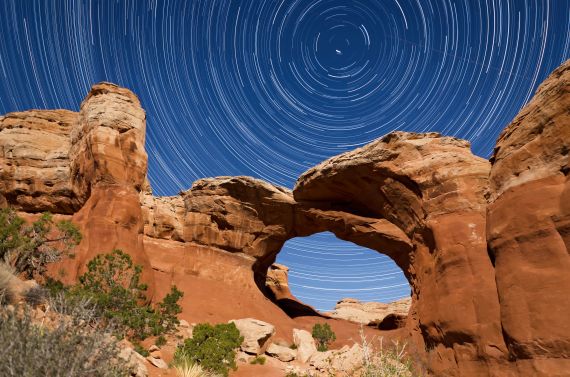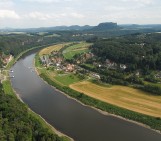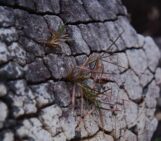This photo was taken by Grant Wilson at Arches National Park, Utah, USA. The park is home to more than 2,000 sandstone arches, exposed by years of weathering and the removal of softer rock. They are part of the Entrada Sandstone formation, which was deposited during the Jurassic. “The arches form as ice accumulated in fissures expands and breaks the rock forming fins. Wind and water eroded the fins, removing the less resistant material to form the arches,” Wilson explains.

“Star trails at arches” by Grant Wilson, distributed by the EGU under a Creative Commons licence.
The arch in this photo is called Broken Arch because it has a crack running through its apex. The arch itself is not the only exciting feature in this photo though. It was taken at night – and those streaks in the sky are stars. But if the photo wasn’t taken during the day, how is it so bright?
Exposure. Not rock exposure, but the time taken to take a photo – this image was captured with a 3 hour-long exposure, letting a lot of light into the camera. This also means we can see the stars tracking across the sky: “During this time the Earth rotates approximately 45 degrees, forming the star trails in the photo. At the time the moon was almost full, which lit up the arch allowing it to be seen in the middle of the night,” explains Wilson.
For more on the formation of Utah’s sandstone arches, see this short animation, which takes you from the formation of the Rocky Mountains some 300 million years ago, through to the final steps that expose the arches that stand there today:
Imaggeo is the EGU’s open access geosciences image repository. A new and improved Imaggeo site will be launching soon, so you will be able to peruse an even better database of visually stunning geoscience images. Photos uploaded to Imaggeo can be used by scientists, the press and the public provided the original author is credited. Photographers also retain full rights of use, as Imaggeo images are licensed and distributed by the EGU under a Creative Commons licence. You can submit your photos here.



